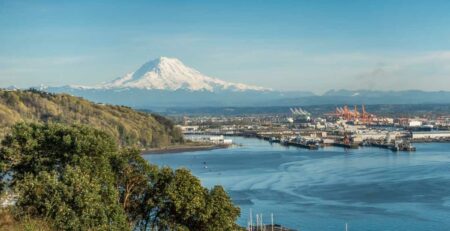Checklist When Purchasing Waterfront Property
Waterfront properties hold a unique allure due to their commanding water views. The peacefulness and tranquility of living by the water can provide a sense of escape from everyday life. Recreational opportunities are also a major draw for many people.
Waterfront properties often offer a luxurious and upscale lifestyle, with amenities like private docks, beach access, and stunning sunsets. The value of waterfront properties tends to appreciate over time, making them a sound investment opportunity.
A checklist ensures a successful investment when purchasing a waterfront property. It helps potential buyers to evaluate their needs and requirements, such as proximity to necessary amenities, views, and water access.
A checklist ensures that all necessary legal and permitting processes are followed before finalizing the purchase. It also helps identify potential issues or drawbacks like flood zones, erosion concerns, or infrastructure limitations.
Location, Location, Location
Assessing the Desirability of the Location
When assessing the desirability of a location, two important factors to consider are proximity to amenities and services, accessibility, and convenience. The proximity to amenities and services, such as grocery stores, schools, and healthcare facilities, is important in determining the convenience and ease of daily living. Being close to these amenities can save time and provide a better quality of life.
Additionally, accessibility plays a significant role, as it refers to how easily one can access transportation, main roads, and public facilities. A location that is well-connected and easily accessible ensures convenience in commuting and accessing different areas, making it a desirable choice for many individuals.
Investigating the Neighborhood and Community
Safety and security are factors to consider. Researching crime rates and getting to know the local police department can provide valuable insights into the area’s safety. Exploring the neighborhood vibe and available activities can help determine if it aligns with one’s interests and lifestyle.
Assessing the availability of parks, recreational facilities, and community events can give a sense of the community’s vibrancy and potential for social engagement. By thoroughly investigating these aspects, one can make an informed decision about the compatibility of a neighborhood with its needs and preferences.
Waterfront Specifics
Water Access and Views
There are certain factors to consider with water access and views for a property. First, it is important to determine the property’s water frontage. This involves measuring the length of the property that directly faces the water, as this will determine the extent of its access.
Additionally, it is best to evaluate the quality and condition of the waterfront area. This includes checking hazards that may impact the enjoyment and use of the water. Ensuring that the water frontage is in good condition and meets one’s desired standards is essential for those seeking a property with water access and breathtaking views
Water-Related Activities and Restrictions
One must determine if there are any restrictions on water usage, such as limits on irrigation or outdoor water use. Additionally, researching local regulations is crucial when participating in boating or fishing activities. Each area may have specific rules and guidelines to protect the environment. Being informed and adhering to these regulations ensures a responsible and enjoyable experience.
Flood Risk Assessment of Waterfront Property
Flood risk assessment is an essential step when evaluating waterfront property. Firstly, it is crucial to evaluate the property’s flood zone designation. Federal Emergency Management Agency (FEMA) classifies flood zones based on the likelihood of flooding occurring in a particular area.
This helps determine the property’s vulnerability to floods and allows for informed decision-making. Additionally, researching historical flooding incidents in the area provides valuable insights into the severity of past floods. Understanding the patterns and extent of previous flooding can help identify risks and assess the property’s suitability.
It is important to explore insurance coverage options. Flood insurance provides financial protection against damages caused by floods, which are typically not covered under standard homeowner’s insurance policies. Evaluating flood insurance options can ensure that adequate protection is in place, mitigating potential financial losses.
Property Condition and Infrastructure
Home Inspection and Assessment
Home inspection and assessment is a process when purchasing a house. It involves evaluating the property’s overall condition to ensure it meets safety and quality standards. One of the key aspects is inspecting for potential water damage and mold. Water damage lead to structural issues. A home inspector can identify any existing or potential issues by thoroughly examining areas prone to water damage, such as the basement, roof, and plumbing.
Assessing the Property’s Infrastructure
This entails checking for reliable utilities and drainage systems to ensure the property has the necessary resources for daily living. It is important to evaluate the condition of docks, seawalls, and other water-related structures as they play a significant role in coastal properties. By carefully inspecting these aspects, potential issues can be identified beforehand, allowing for better decision-making regarding the property’s suitability and potential upkeep costs.
Lifestyle Considerations
Determining the Desired Waterfront Lifestyle
Deciding between relaxation and privacy versus engaging in active water-based activities is important. Some may opt for a serene environment for unwinding and enjoying the tranquility of the water, while others may seek excitement through activities like swimming, boating, or water sports.
Considering noise level and community involvement preferences is essential. Some individuals may prefer a lively community with regular social gatherings and events, while others value a quieter and more secluded atmosphere. Determining these aspects helps shape the vision of the ideal waterfront lifestyle.
Considering the Long-Term Feasibility of the Lifestyle
Consider the long-term feasibility. We need to assess whether our choices can be sustained over time. This involves looking at financial resources, time commitments, and personal satisfaction. Ensure that our chosen lifestyle suits our present needs and is adaptable for the future. Thinking ahead and planning can help prevent burnout and maintain a balanced and fulfilling life in the long run.
Financing and Insurance
When considering purchasing a waterfront property, research financing options carefully. As these properties are often more expensive than regular homes, exploring different lenders and loan programs is important to find the most suitable option. Some lenders specialize in financing waterfront properties and may offer competitive interest rates and terms.
In addition to financing, understanding insurance requirements and costs is essential waterfront properties are susceptible to flooding and storms, impacting insurance premiums. It is advisable to consult with insurance experts to ensure adequate coverage and to get an estimate of the insurance costs involved in owning a waterfront property.
Environmental Protection and Conservation
With the increasing concern over environmental protection, addressing possible issues related to waterfront properties is essential. One of the primary concerns is erosion and land degradation. Measures should be taken to protect against erosion using techniques such as retaining walls and vegetation. Furthermore, exploring community conservation efforts can help conserve water resources.
Rainwater harvesting and proper irrigation systems can reduce water consumption and promote sustainable use. It is essential to understand that protecting and conserving water property is beneficial for the environment and maintaining the integrity and value of waterfront properties.
Professional Assistance for Waterfront Properties
Engaging a real estate agent specializing in waterfront properties can provide you with the expertise and knowledge needed to navigate the complexities of these unique transactions. They can help you find the perfect property that meets your specific desires and meet all legal and regulatory requirements. Additionally, consulting with an attorney specializing in waterfront transactions is essential to protect your interests throughout the buying or selling process.
They can advise on legal matters, such as zoning and environmental regulations. Working with an insurance agent specializing in waterfront properties is best to assess and mitigate potential risks properly. They can help you secure adequate insurance coverage for your property, including flood insurance if necessary. By seeking professional assistance from these experts, ensure a smooth and successful transaction for your waterfront property.
Research and Take Time to Choose the Right Waterfront Property
When purchasing waterfront property, have a checklist in hand. This serves as a guide to ensure all necessary factors are considered before deciding. The checklist should include the location, access to amenities, proximity to healthcare facilities, environmental regulations, and the potential for future developments. Taking the time to research and carefully consider these factors is essential thoroughly. Visiting the property multiple times is recommended to understand the surroundings and potential inconveniences fully. By doing proper research and taking the necessary time, potential buyers can make an informed decision and choose the right waterfront property.
















LEAVE A COMMENT